How a Singaporean fell in wanderlust with Havana
“This is peak hour traffic,” my friend Desmond announced grandly with a twinkle in his eye, as he gestured to the scene outside his silver grey Land Cruiser idling at a traffic light junction. It’s 8.45am on a Tuesday at one of the biggest intersections in a city where two million people live. We were the only vehicle on the road.
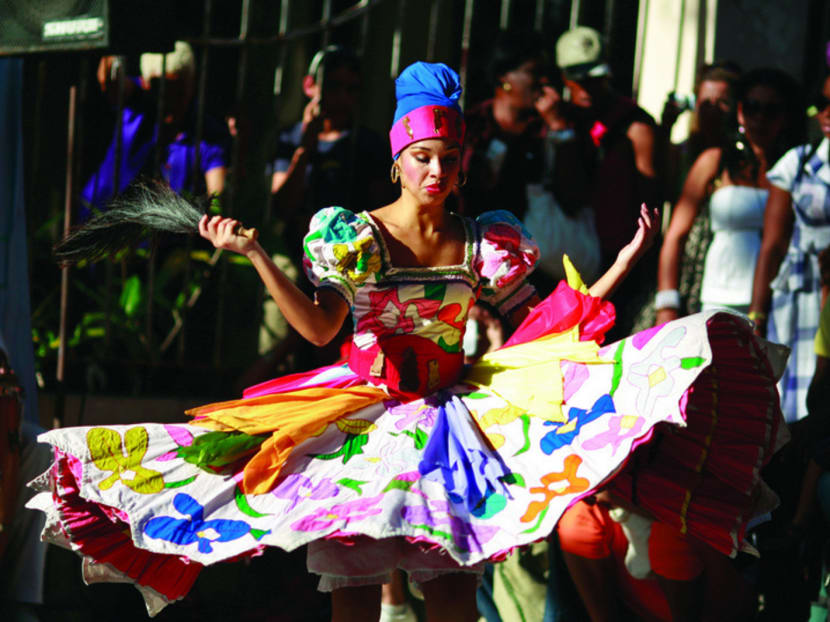
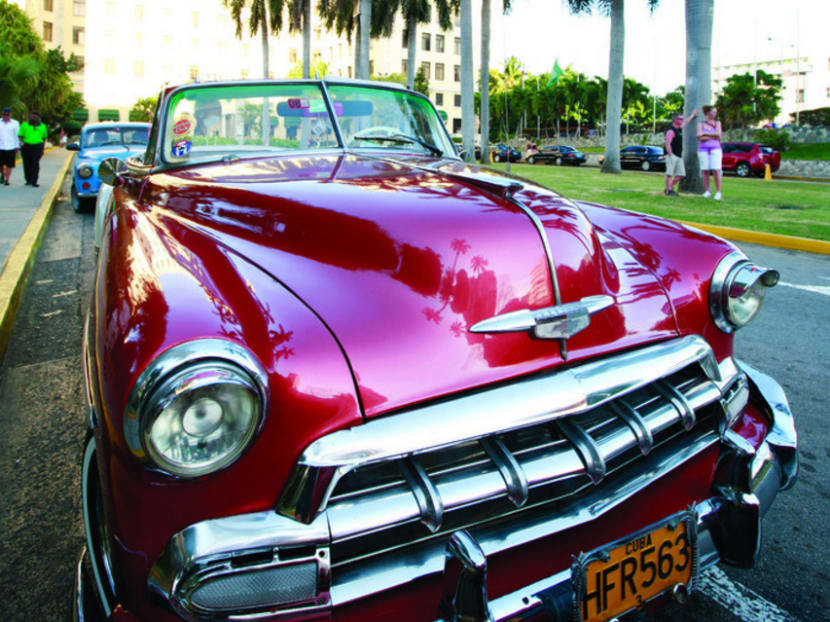
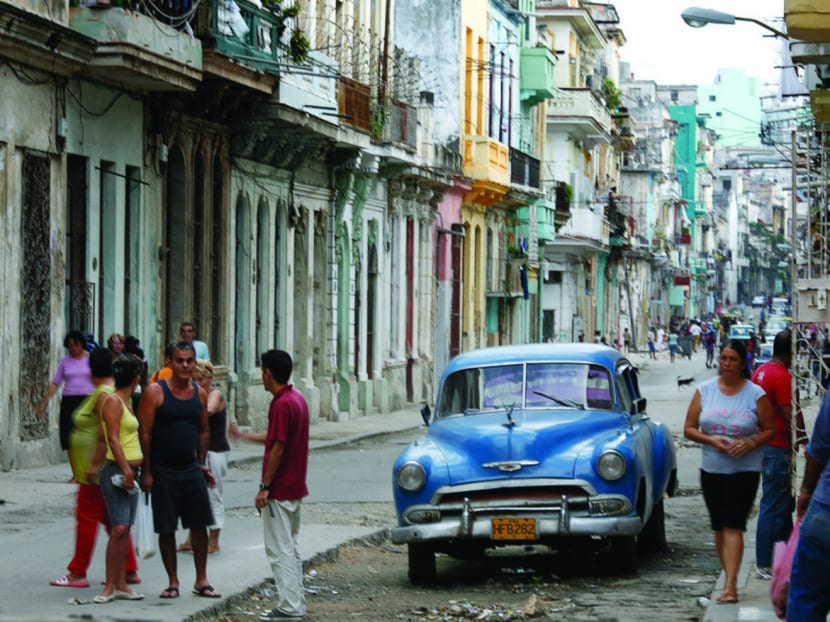
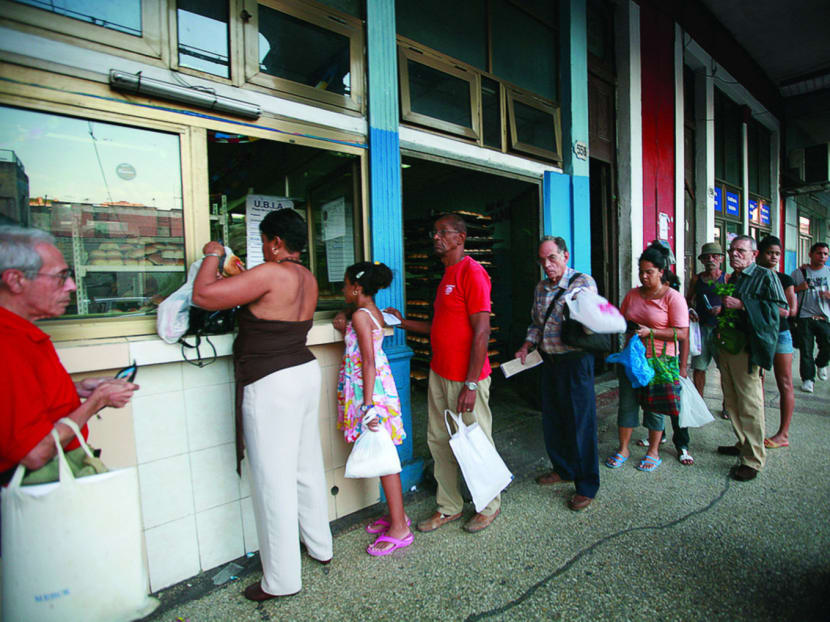
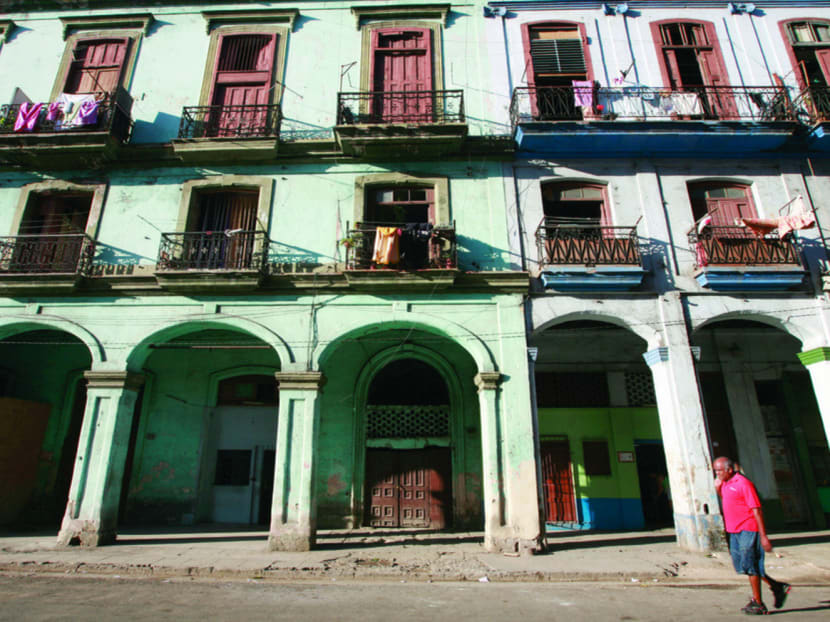
“This is peak hour traffic,” my friend Desmond announced grandly with a twinkle in his eye, as he gestured to the scene outside his silver grey Land Cruiser idling at a traffic light junction. It’s 8.45am on a Tuesday at one of the biggest intersections in a city where two million people live. We were the only vehicle on the road.
Welcome to the heart of Havana, Cuba, where change is accelerating for residents trapped in a time warp for the past 55 years.
Ask anyone what they know of Cuba and three things come to mind: Cigars, rum and Fidel Castro. Due to Cold War enmity between the United States and the Soviet Union, Cuba had been under a US trade embargo since the early 1960s. Under “el bloqueo” (“the blockade”), imports into the country were severely restricted; even everyday household items such as toilet paper can be tricky to find. It was a country eager to move into the 21st century but was stuck in the glory days of its past.
With the recent thawing of relations with the US, the Caribbean nation is on the cusp of change, and it’s a relief to many Cubans, who are yearning to progress.
Cuba is one of those exotic destinations one hears about but rarely visits. Part of the reason is the challenge of actually getting into the country. Until recently, there were no commercial flights from the US. Connecting via Toronto, London, Madrid and New Mexico were the best options.
Then you need a Tarjeta del Turista (Tourist Card). One can apply for it at the nearest Cuban embassy (which, incidentally, is the one in Jakarta) or pick it up at the airport counters of any of the airlines flying to Cuba. Some airlines also provide it on board. (Still, Singapore and Cuba signed a visa exemption agreement in June last year, promising easier travel once it is ratified.)
WHERE TIME STANDS STILL
The first thing one notices about Havana is how time-worn everything looks. Paint peels off the colourful but faded facades of the turn-of-the-century art deco dwellings. Vintage convertibles cruise along the picturesque Malecon seaside drive, and cracks race along sidewalks before wending their way up weathered and faded colonial buildings.
But there is life, young and vibrant, adding spark and vigour to the threadbare surroundings, especially in Centro Habana (Central Havana), where students play a game of catch in their school uniforms. A woman chats on her neighbour’s doorstep, and infectious laughter spills out from the bustling hair salon around the corner.
Compared to sleek and shiny Singapore, Cuba can seem a world away and behind the times. However, it’s refreshing to be in a city where there is spotty Wi-Fi at best, with no McDonald’s or a multiplex to be found.
There are also no ATMs — or rather ATM that will accept cards that are linked to multinational corporations that have been affected by the embargo. I was rejected at every machine I tried, even at the main tourist office on Calle Obispo (Bishop’s Street), the main shopping belt in the historic Habana Vieja (Old Havana) and a UNESCO World Heritage Site. None of my credit cards worked in Cuba, too.
Here, currency is king. Cuba uses a dual currency system: There are convertible pesos (CUC) and Cuban pesos, often referred to as moneda nacional (MN). The CUC is pegged at a 1:1 exchange rate with the US dollar, and it is primarily used by tourists. CUC$1 can be exchanged for about MN25, which ordinary Cubans use.
FEEDING A CITY
We headed over for a drink at La Bodeguita del Medio, where literary luminaries Pablo Neruda, Ernest Hemingway and Gabriel Garcia Marquez were once counted among its regular clientele. I took in its blue walls, plastered with photographs of patrons who have scribbled signatures and messages all over the place, and revelled in the son cubano, a genre of Cuban music, being performed at the front of the watering hole.
We sat at the wooden main bar counter, where glasses in which mojitos were being prepared were lined-up. The refreshing cocktails, made with Havana Club rum, have been made in La Bodeguita since it opened in 1942. We left the darkened bar and entered the all-embracing heat of a sweltering afternoon.
As we adjusted to the stark brightness, a woman tapped me on the shoulder. “Buy my child some milk please,” she pleaded.
As my friend acceded to her request, we were both reminded of the scarcity of everyday goods in Cuba. I recalled seeing earlier the snaking lines of Cubans patiently waiting to purchase food rations at their local bodega (grocery store), thanks to the Libreta de Abastecimiento (Book of Supplies) distribution system implemented by the Communist government in 1962, which is still in place.
The amount and variety of rations that an individual can purchase depends on the make-up of the family. Those with young children and old family members are given extra allowances. Meat, usually chicken, is available every 10 days or so. To cover the shortfall in food supplies and other basic goods, a thriving black market, often referred to as “por la izquierda” (by the left hand), has entered the fray, and contraband, luxury and rare items can be purchased for the right price.
Beef is so scarce in Cuba that many Cubans joke about having forgotten its taste. (All cattle technically belong to the state and anyone found slaughtering a cow illegally can be sent to jail for up to 10 years.)
Schooled in the art of being resourceful, Habaneros (Havana residents) have not let the occasional lack of food items stop them from embracing paladares (private restaurants), ever since current President Raul Castro eased regulations as part of economic reforms in 2010. Ranging from mum-and-pop operations to classy and contemporary establishments, these private enterprises have transformed the dining scene in a country where rice and beans are the main staple.
Normally run by families, the paladares are often located within homes in apartments and mansions. The cuisine at paladares can be unpredictable — certain ingredients, including salt, are sometimes not available and chefs rely on the largesse of overseas friends and guests to bring in products such as Parmesan cheese, curry spices and sesame seeds.
Like most things in Cuba, queues abound at these places and patience is necessary. We went to Dona Eutemia, a bustling and lively paladar on Cathedral Square serving up traditional Cuban dishes that were worth the wait. An intimate low-key place brimming with the warmth of elderly owner Leticia, it’s in stark contrast to the grand but austere state-run El Patio restaurant further along the square.
We tucked into traditional Cuban dishes of ropa vieja (shredded mutton stewed with vegetables) and arroz a la cubana (rice, eggs and fried plantain in a tomato sauce), which was a staple meal for many during the economic crisis in the 1990s (called the “Special Period” by locals). We saved a little space for the much-raved-about garlic octopus, which lived up to its reputation.
BEAT OF THE CITY
Havana is beautiful, but it’s especially breathtaking at sunset. The best place to soak it all in is along the Malecon, an 8km thoroughfare hugging the shoreline of Havana. We grabbed front row seats on the boulevard, listening to the waves crash along the sea wall in the fading twilight, and marveled as a hodge-podge of art nouveau and neo-classical buildings were bathed in the warm glow of the streetlights. Crumbling splendour in golden glory.
Wildly popular among Habaneros and tourists alike, the iconic Malecon is a space where the rich and poor gather alongside the old and young, offering a peek into the soul of the city. Men playing chess gave way to canoodling lovers, as families out for a post-dinner strolled and saxophonists performed their latest masterpiece.
For a lesson in Cuban history, we ventured to the Museo de la Revolucion (Museum of the Revolution), housed in the former presidential palace. Ironically, for a museum mostly dedicated to chronicling Castro’s revolution, the museum’s interior was decorated by the premier US jeweller Tiffany’s. It’s hard to escape the propaganda efforts found all over the city. One can’t help but wonder if they are attempts by the socialist regime to remind citizens of the values of the revolution, at a time when change is imminent and Cubans are intent on pursuing material wealth.
To see how Habaneros have fun, there’s no better venue than the Sabado de la Rumba (the Saturday Rumba) at El Palenque in the Vedado neighbourhood. Rumba has its roots in Afro-Cuban culture, and there we found a dizzying mix of percussion, song and dance. We could feel our blood pulsing along to the beat even before entering the courtyard.
Members of the dance company performed the rumba, guaguanco and yambu, but others soon joined in, bodies swaying to the hynoptic rhythms on the dancefloor to “ripearse” (tear it up). For three sublime hours, everyone was lost in the beauty of the mesmerising tunes, moving as one to the heartbeat of Cuban music.
Similarly, Havana reels you in with its soul-stirring charm, elegantly dilapidated buildings and unguardedly warm residents, and one can’t help but feel slightly overwhelmed, absolutely enraptured and utterly alive.





